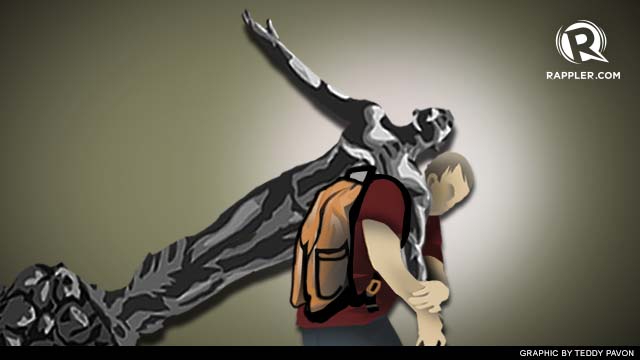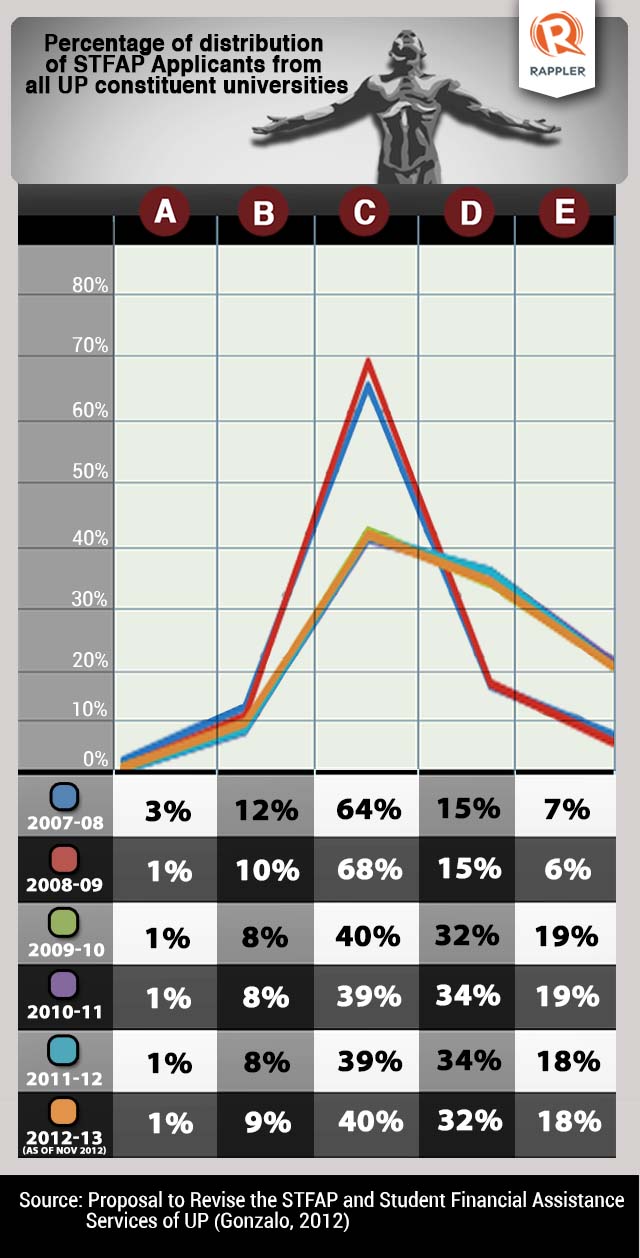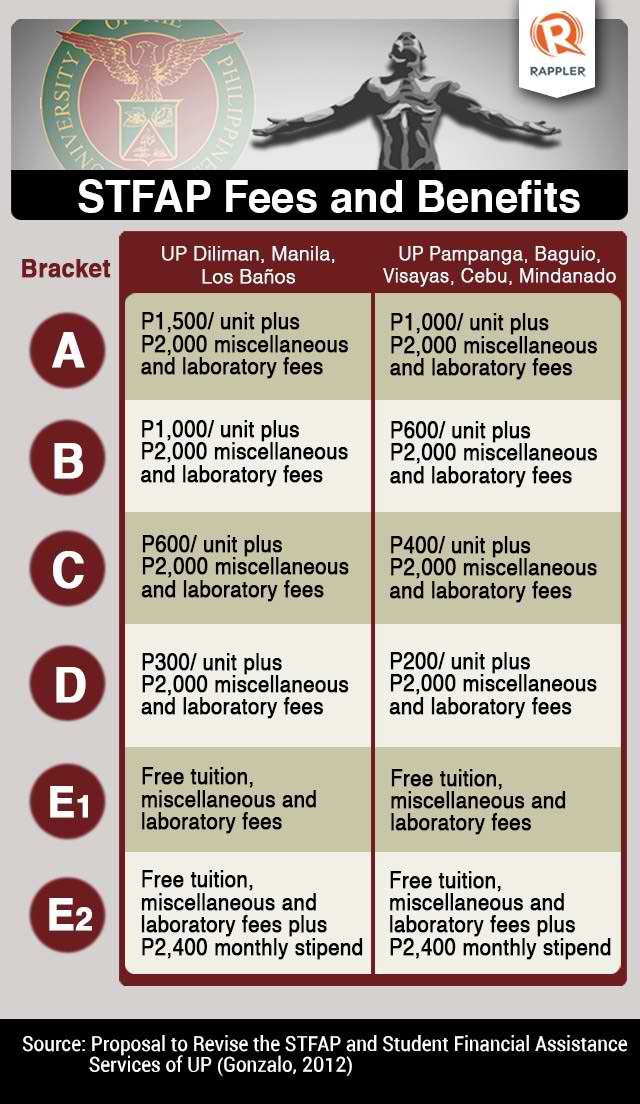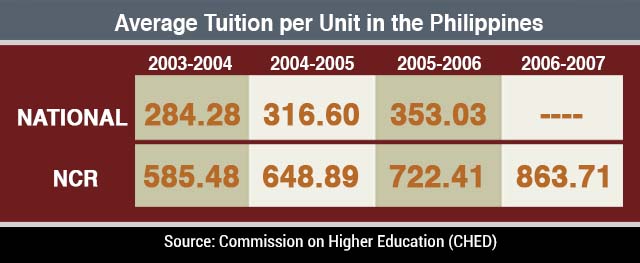SUMMARY
This is AI generated summarization, which may have errors. For context, always refer to the full article.

MANILA, Philippines – The death of the University of the Philippines (UP) student Kristel Tejada resurrected public discussion on the affordability of higher education not only in the premier state university but also in other higher educational institutions.
Kristel’s suicide was widely linked to her failure to pay tuition on time, leaving her with no other option but to take a leave of absence as required by UP Manila’s “no late payment policy.”
Emotions ran high from the streets to the Internet as a stunned and indignant public grappled with the unthinkable tragedy that turned into a rallying point for public outrage, crucifying the premiere state university.
As public anger built up within and beyond the academic community, UP officials changed tack and policy. UP president Alfredo Pascual did not only scrap the controversial “no late payment policy” but also vowed to reform the even more contentious Socialized Tuition and Financial Assistance Program (STFAP), the scholarship program of the university.
“With all UP stakeholders collectively working towards reform, I am confident we can soon truly say that no qualified student is denied education in UP because of financial reasons,” Pascual said.
“Let us now look forward and turn our grief into a stronger resolve to address the concerns brought out by this tragedy,” Pascual stressed as Kristel was laid to rest.
The unfortunate event signaled the time to scrutinize the accessibility of education. This year, not only will UP revise the STFAP. The Commission on Higher Education (CHED) is also poised to institute a socialized tuition scheme in other state colleges and universities patterned after UP’s program.
Only 1 in 100 enjoys free tuition
The Board of Regents (BOR), UP’s highest policy-making body, is set to act on Pascual’s proposal during its April 16 meeting.
The reform package, contained in the document “Proposal to Revise the STFAP and Student Financial Assistance Services of UP” drafted by Prof Richard Philip Gonzalo, stresses that students will no longer be charged based on their income class but on “their means to pursue and finish their chosen degree programs.”
But the current student regent, who sits in the board on behalf of more than 50,000 students of UP, is cynical about the reform initiative.
“Will the 2013 revisions to STFAP answer the problem, that after two decades of its implementation, the number of students (in Diliman) enjoying free tuition has decreased from 20% in 1991 to less than 1% at present?” UP student regent Cleve Arguelles asked.
Arguelles harbors a sentiment that has been hounding the STFAP for over two decades now.
In 2012, of the 3,823 STFAP applicants in UP Diliman, only 74 students whose parents earn way below the minimum wage in the National Capital Region (NCR) enjoyed free tuition with stipend. It was a “historical low” since the scholarship program was last restructured in 2007, according to the Philippine Collegian.
In 2010, only 1.16% of the 39,474 UP students who enjoy STFAP were granted the same full subsidy, the office of the student regent reported.
The number of UP students who enjoy free tuition has thinned over the past two decades, from one in every 5 scholars to 1 in every 100, the Philippine Collegian said.
‘Migration’ of STFAP applicants
The current UP administration admitted that the STFAP bracket system is ineffective, noting that the assignment parameters used “do not necessarily capture the students’ capacity to afford the cost of university education.” It recognized the growing need for financial assistance that has been documented since the 2007 tuition increase.
The UP proposal to revise the STFAP revealed that there has been a “migration of STFAP applicants from high brackets to low brackets,” (i.e., free/high tuition fee discount brackets to lower discount brackets) between 2007 and 2012. This indicates that many UP students now have “a reduced capacity to pay” the cost of their education in the state university.

Moreover, since students in lower income brackets also struggle to meet the cost of living while studying, they tend to resort to working in call centers and taking other part-time jobs like baby-sitting and doing household chores, the proposal revealed.
The report explained that STFAP benefits did not factor in differences in cost of living across campuses and the lack of affordable facilities, suggesting the need to provide allowances that will cover other basic needs such as meals and lodging to help needy students survive university life.
Millionaires’ bracket
The current STFAP follows an alphabetic bracketing scheme that is mainly based on annual family income and assets owned. It also considered other income related family characteristics such as educational attainment and occupation.
The scheme includes a millionaires’ bracket (A) for those who can pay the full cost of education in UP and the highest brackets E1 and E2 that offer free tuition and other benefits. Students assigned to other brackets enjoy a range of discounts.
Pascual’s proposed changes include simplifying the process of application, changing the bracketing system, streamlining the procedure for reconsideration, and increasing the stipend for students in the lowest STFAP bracket.
It boasts of using a faster, simpler and more reliable method of assigning brackets based on the Philippine Socio-economic Classification (SEC) that groups households according to their annual expenditures.
Applying for STFAP involves a long and tedious application process. After accomplishing the 14-page STFAP form, applicants have to endure the long wait for their assigned brackets and benefits that sometimes stretches until the second semester, the proposal noted.
When a student appeals to be assigned to a higher bracket, the process becomes a cruel and disheartening experience, former UP student regent Krissy Conti recalled in a note she posted on Facebook.
“It’s an endless slideshow of rickety houses and backyard toilets, computations of utility bills, and probing questions into other families’ lives. I leave these meetings thoroughly haunted by poverty up close, and disturbed that we can decide who gets what by comparing circumstances,” Conti lamented.

‘Smokescreen for tuition increase’?
UP student regents, student councils which select them, and activists have generally opposed the financial assistance scheme since it was introduced in 1989, calling it a “smokescreen for tuition fee increase.”
When the STFAP first rolled out, the tuition in UP was hiked from P40 to P300 per unit in UP Diliman, UP Manila and UP Los Baños (P200 per unit in other UP units).
In instituting the STFAP, the BOR said it was “part of UP’s effort to democratize access and admission to its academic programs and promote fairness and social justice in the University.” Thus, the socialized tuition scheme was also called the Iskolar ng Bayan Program.
After it was restructured in 2007, supposedly to adjust to inflation rate, the state university’s tuition increased to P1,000 per unit in UP Diliman, UP Manila and Los Baños (P600 per unit in other UP units), surpassing the average tuition in the National Capital Region at the time.

The 2007 increase in tuition and miscellaneous fees was based on the principle that “students who can afford should pay at least the full cost of their UP education as tuition fees, and students who cannot should be granted subsidies,” according to the report of the committee constituted by then UP president Emerlinda Roman to review the STFAP in 2006.
The “prevalent notion that state-owned institutions are obliged to set uniformly low (even zero) tuition fees has gradually given way to acceptance of the principle that students themselves – rather than the general taxpayer – should pay for the cost of higher education,” argued UP College of Economics Prof Emmanuel de Dios, who headed the committee.
“This growing realization has been prodded on by the stagnation of state-support given the government’s chronic budgetary difficulties,” de Dios explained.
The Roman administration then projected that the full impact of the STFAP restructuring will only affect students who belong to the richest 3% of the population, or 20% of the incoming first year students at the time.
But student leaders felt the increase burdened their constituents but did not trickle down to state scholars. Of the P500 million revenue generated as a result of the 2007 increase, only P25 million was used for STFAP beneficiaries, the Katipunan ng mga Sanggunian ng Mag-aaral sa UP, an alliance of student councils in the UP system, claimed.
Is UP a good role model?
Other state colleges and universities are closely watching the UP experience on administering STFAP at a time when CHED is embarking on an initiative to reform the public higher education sector. CHED’s Roadmap for Public Higher Education Reform (RPHER) plans to institute a “generic socialized tuition fee scheme” that will be designed in 2013 and piloted in 10 SUCs by 2014.
UP spelled out its role in relation to the roadmap even as it pursues its own reforms. “The opportunity to assist CHED is at hand: the current STFAP can serve as a model that SUCs can adopt,” the Gonzalo report said.
But SUCs are cautious about fully adopting the STFAP scheme, aware of its flaws and the recent tragedy it was linked to.
“We are hoping that the incident will serve as a wake-up call to all members of the education sector, the SUCs in particular,” Philippine Association of State Universities and Colleges (PASUC) president Dr Ricardo Rotoras told Rappler.
Rotoras suggested that an entirely socialized tuition fee scheme might not be appropriate in the context of SUCs.
“In the purely socialized tuition fee, you only look at the economic status of students,” Rotoras said.
Suggesting a “hybrid” scholarship program, Rotoras emphasized that there might be a need to offer 100% free tuition in academic programs that do not interest students but are important to regional and national development.
Dramatic budget increase
At the heart of the policy changes affecting matriculation in public education is the shift in official philosophy on subsidizing higher education. While the constitution mandates the state to work for the attainment of accessible quality education at all levels, there has been a general decrease in state subsidy on higher education from President Cory Aquino’s administration to her son’s.
“In the past, that was really the view of the SUCs that the government is abandoning its obligation because for quite sometime the budget was minimal. There was basically a decline in the budget,” Rotoras said.
The Aquino administration recently increased the budget of SUCs by 44%, with UP getting the highest budget amounting to P9.53 billion. The allocation represents only 67.98% of the total budget requirement that SUCs asked Congress, according to Kabataan Partylist Rep Raymond Palatino.
But Rotora welcomed the increase, noting that such dramatic increase did not happen in the past 15 years. His concern now is the sustainability of the increase, let alone the fate of SUCs in view of plans to phase out programs as articulated by President Aquino in his 2013 budget message.
Free education vs income generation
The CHED roadmap also anticipates that by 2016, 22 leading SUCs will be able to shoulder 50% of their budget.
“It’s not good to give that responsibility to SUCs alone to generate their own income. If you don’t have assets, you will be left to generate your own income, you have no other choice but to increase your tuition fee. It’s not good,” Rotoras stressed.
UP, which has vast assets, large donations, and immense prestige, faced the same dilemma. Confronted with budget cuts before, it did not only generate income from its properties but also from the iskolar ng bayan through the STFAP.
The burden of sustaining higher public education is being transferred from the state to SUCs. In the community of state scholars, how UP deals with it carries a lot of weight. – Rappler.com
Add a comment
How does this make you feel?





There are no comments yet. Add your comment to start the conversation.